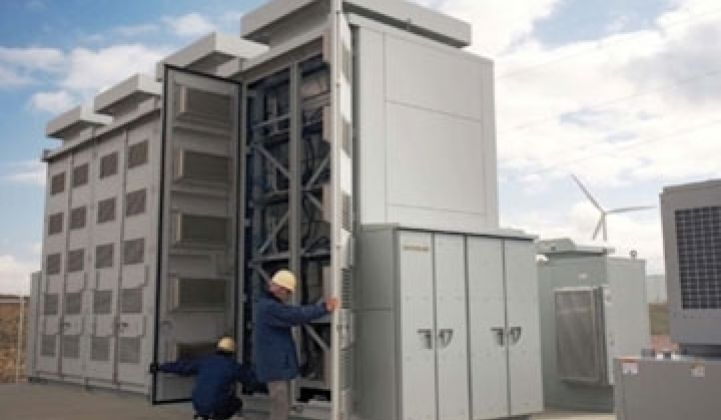Berkeley, Calif.--Energy storage could soon be mandatory in California.
Assembly representative Nancy Skinner and state Attorney General and gubernatorial candidate Jerry Brown are behind a bill -- AB 2514 -- that will require utilities to obtain 2.25% of their peak power from storage systems by 2014 and 5% of their peak power from storage by 2020, said Janice Lin, managing partner at StrateGen Consulting at the UC Berkeley Energy Symposium today.
That, of course, is good news for storage companies: storage mostly exists in theory at the moment, particularly in the U.S. Worldwide, approximately a gigawatt of grid storage has been installed, she said, but that's a global figure. And most of that capacity is overseas. NGK is installing a number of its sodium sulfur battery packs in Japan. (Last year, General Electric announced it would start making sodium sulfur batteries, which get arranged in massive data-center-like structures to store power generated at wind farms. Sodium sulfur batteries can also power locomotives.)
The 5-percent figure will require around 4 gigawatts of grid storage, said Ed Cazalet, the founder of MegaWatt Storage Farms, which wants to build energy storage farms.
Some utilities are already moving forward with plans. Pacific Gas & Electric is building a 4-megawatt sodium sulfur battery station in Silicon Valley and massive 300 megawatt compressed air storage facility and a gigawatt-plus pumped hydro station.
Meanwhile, in southern California, Ice Energy has lined up with utilities to install 53 megawatts off its ice-powered air conditioners in the region. Ice air conditioners are considered storage devices because they shift a peak power function (air conditioning) to nighttime. That alone will allow some utilities to hit their 2014 goals in the near term.
One challenge will lay in making storage more economical. Technologies like flywheels that can provide short-term storage, i.e., storage for a few seconds or minutes, are already relatively economical, according to Nth Power's Matt Jones. But the price on persistent storage systems -- devices or structures that can store energy for hours or store power generated during off peak hours for consumption during peak periods -- have to come down. Right now, batteries sell for $500 per kilowatt hour, according to various industry sources.
"You need to get to sub-$250 a kilowatt hour to make that work," Jones said.
The compressed air field being erected by PG&E will be able to store energy at $120 per kilowatt said Hal LaFlash, who oversees PG&E's energy innovations division. Compressed air facilities, however, are still largely geography-dependent: they require large caves. Some companies like SustainX are building industrial compressed air storage systems but they remain mostly in the experimental stage.
Storage looks even better when you compare it to building new power plants. You would need 16 megawatts of new power plants to replicate what 4 megawatts of storage will do, argued Cazalet.



